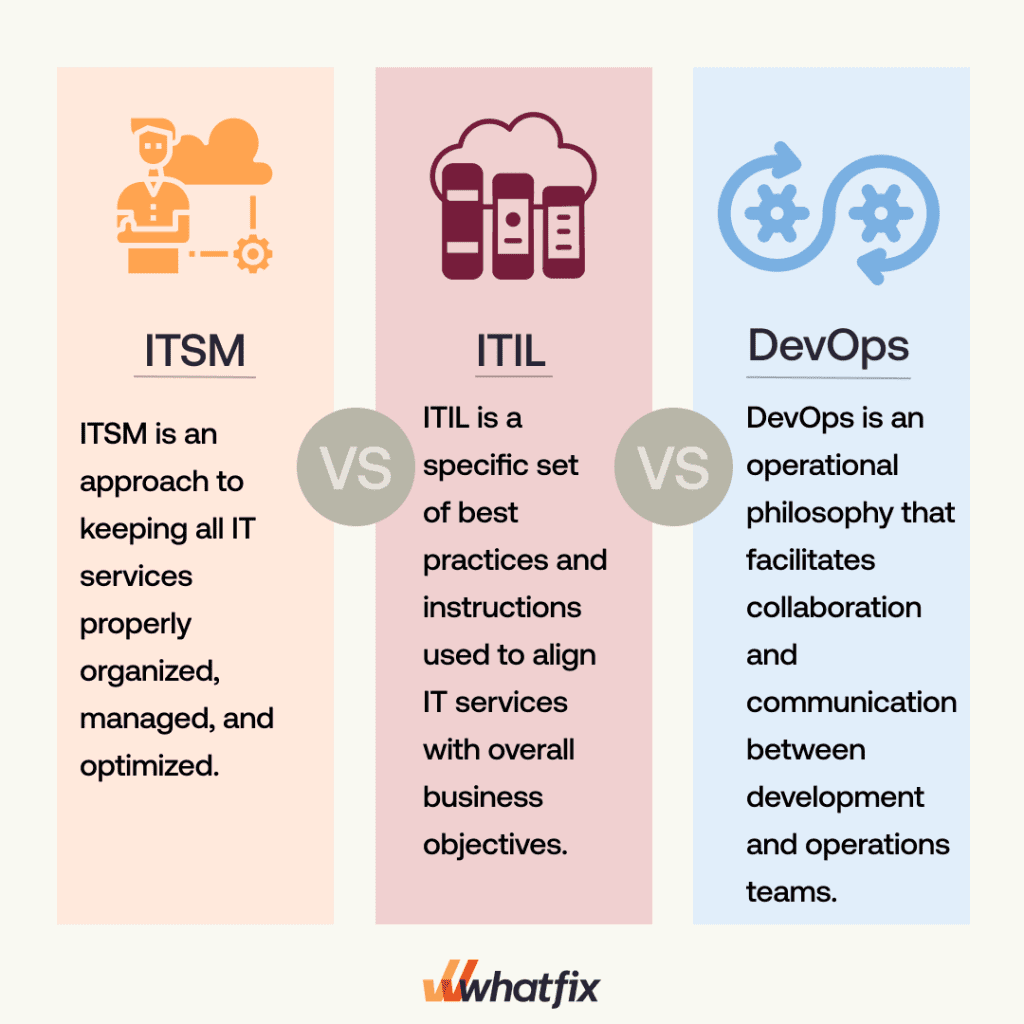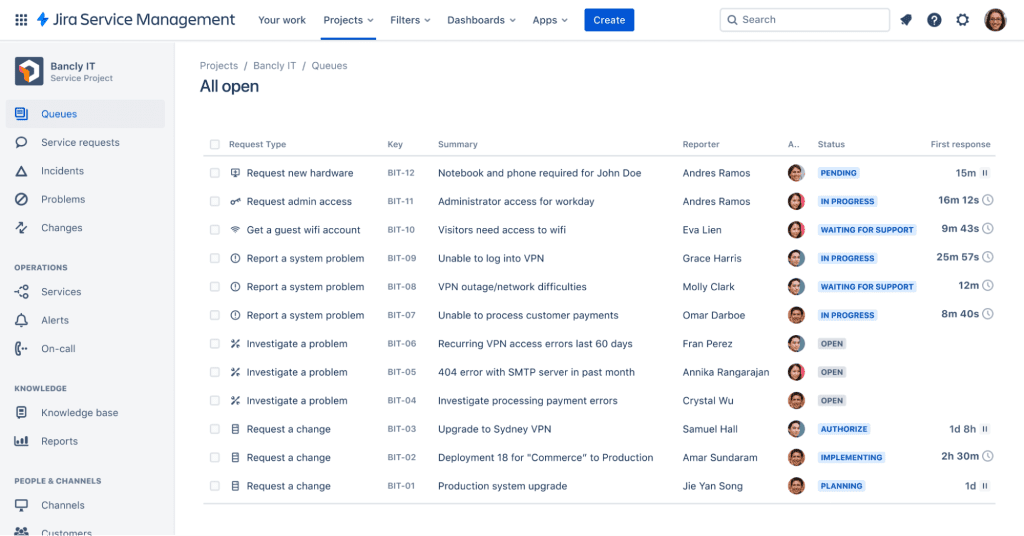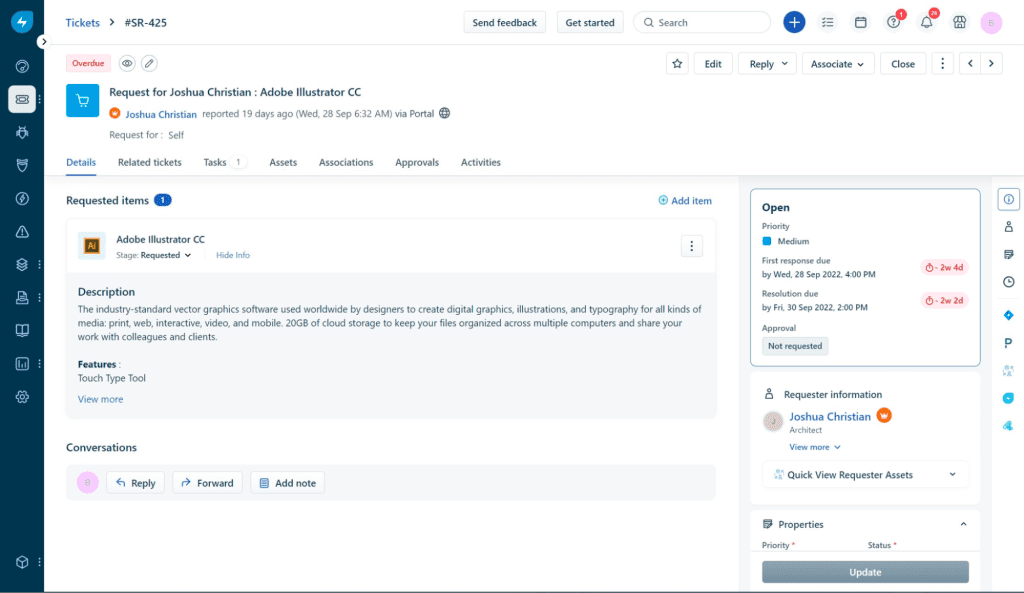
Andrew Dennis


A company’s IT infrastructure is the backbone of its operations. IT infrastructure improves employee and end-user experience and satisfaction when implemented and utilized correctly, empowering organizations to maximize productivity powered by technology.
But managing IT services is complicated and time-consuming — and even more so without a clear management strategy or IT framework in place. To get the most out of IT services, you need to be proactive about creating and optimizing your services.
This is where IT service management comes in – commonly referred to as ITSM. Let’s walk through everything you need to know about ITSM, and how to find and use ITSM tools.
Information technology service management (ITSM) is an umbrella term that describes the systems and processes a company implements to ensure IT services are properly optimized and utilized across the organization. ITSM aims to improve IT service quality, consistency, and availability.
ITSM can include everything from service strategy and design to operations and improvements. The entire IT service lifecycle is managed under ITSM.
ITSM isn’t replacing your information technology infrastructure library (ITIL) or DevOps teams. They all work best when connected. Here’s a quick overview of the difference between ITSM, ITIL, and DevOps:

ITSM helps companies better manage and control their IT infrastructure. Here’s how that benefits the organization:
ITSM processes manage and optimize IT services and ensure services align with overall business objectives. Let’s cover a few key ITSM processes.
Service request management and fulfillment involves processes that ensure standard requests are handled timely and efficiently. Service request management processes provide users with the appropriate resources and support and create standardization and consistency from request to request.
Incident management processes bring operations back to normal after an incident. Incident management software provides the infrastructure that enables teams with instructions for analyzing, logging, and prioritizing incidents based on impact and urgency.
Problem management processes usually go hand-in-hand with incident management processes. Problem management looks for recurring incidents and ongoing service problems to help identify and address the root issues and prevent future incidents from occuring.
Configuration management processes keep configuration items within an IT environment up to date. As the IT infrastructure changes and adjusts to evolving needs, configuration management processes ensure the integrity of the IT environment isn’t compromised.
Change management processes oversee and control major changes to IT infrastructure or service options. Not only do change management processes provide standardized instructions for introducing or eliminating new IT to the organization, they also ensure operations continue to run as smoothly as possible throughout the change lifecycle.
Knowledge management processes refer to the steps taken to capture, organize, and share company information. These processes help improve decision making, training, and problem resolution while also reducing errors or mistakes.
An IT service catalog is a list of all IT services offered by a company. Service catalog processes focus on maintaining the list of available services in a user-friendly manner. This might include service descriptions and availability.
An IT help desk is a point of contact for users to report issues, ask questions, or find out more information about IT services. Processes associated with the IT service desk include submitting and responding to requests, logging and organizing request records, and more.
Service level management oversees service level agreements (SLAs) and ensures customer and user expectations are met. Service level management processes maintain high-quality service delivery and performance.
IT services need to be continuously updated and improved upon. Continual improvement management processes are used to analyze service performance and identify opportunities for improvement. These processes prevent IT services from becoming outdated and maintains alignment with changing business needs and requirements.
Workflow and talent management processes make sure team members and employees have the necessary skills and training to work with various IT services in order to meet business goals. These processes cover designing and optimizing workflow, training and educating employees, and hiring appropriate new talent.
Asset management processes keep IT software, hardware, and resources organized and updated. Asset management processes help control costs, ensure compliance, and improve decision-making by making sure the appropriate IT assets are available and properly utilized.
Here are specific examples of common ITSM service requests:
ITSM tools make it easier to manage your IT services, workflows and requests. Here are the five top ITSM tools to consider:
Whatfix is a digital adoption platform (DAP) that provides on-demand support and in-app assistance to users. With Whatfix, you can add in-app guidance and self-help support to your app or website, allowing your end users to solve problems and answer questions independently.
With Whatfix, enable your application end-users with contextual, role-based guidance and assistance such as:

With behavior analytics and reporting, Whatfix shows you exactly what services your users might be struggling with so you can make the necessary improvements.

Above: Example of contextual help and user support built with a Digital Adoption Platform.
Whatfix’s Self-Help overlays on to any web application, desktop application, mobile app, or website. It provides contextual help to users and integrates with your FAQs, support center, LMS, user documentation, and more. Users are presented with common issues and help content for their contextual area in the application, or they can use an open-ended search to find the specific help content they’re looking for. These help support cards often prompt in-app guidance, walking users through the specific workflow they need help on.

ServiceNow is a cloud application platform that provides real-time data and actionable insights to help you deliver better services to end users. The ServiceNow platform can automate your business processes, provide AI-based assistance, and manage incidents, changes, and all your company knowledge. Moreover, its flexibility allows seamless integration with a variety of tools and platforms, enhancing the overall efficiency and collaboration within your IT Service Management ecosystem.

Jira Service Management connects your IT, development, and business teams teams together to easily manage high-velocity service requests. Jira Service Management makes collaboration easy, creating the right environment to deliver valuable IT services quickly and at scale.

Cherwell is an enterprise-grade ITSM that offers much-needed platform flexibility. Cherwell covers everything from incident and request management to discovery and dependency mapping. The Cherwell Marketplace offers additional features and tools to customize capabilities and build an even more powerful solution.

FreshService is a modernized service management tool that uses AI and automation to help employees efficiently address requests and minimize downtime. It provides a real-time view of your IT infrastructure and assets, and makes planning and implementing service changes and project plans easy.
When choosing what ITSM solution is best for your company, here are five things to consider:
Make it easier to manage your ITSM initiatives with Whatfix. With Whatfix, enable your end-users with in-app guides and deflect IT support issues with self-help support. With Whatfix, you can provide users with the exact, contextual resources and instructions they need for their specific roles and responsibilities, and get the most out of your IT services. With end-user behavior analytics, you can continuously refine digital strategy by identifying areas of end-user friction, building optimal digital workflows, have a holistic view of software license usage, and drive end-user adoption to maximize IT and software ROI.
With Whatfix’s digital adoption platform and analytics suite, analyze, build, and deliver better end-user experiences to accelerate technology adoption and enable end-users to maximize software usage. Whatfix’s no-code system enables IT teams to analyze and measure digital adoption and product usage, create in-app guidance, and provide self-help user support.

Thank you for subscribing!